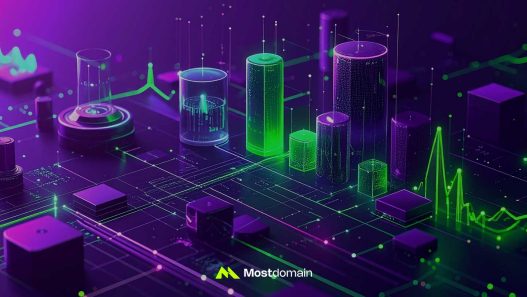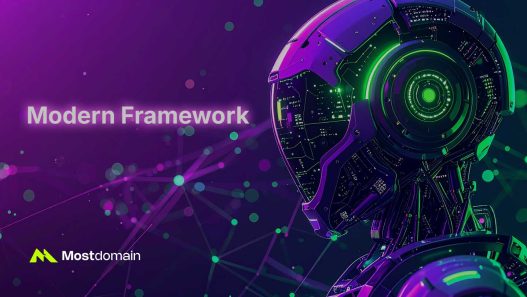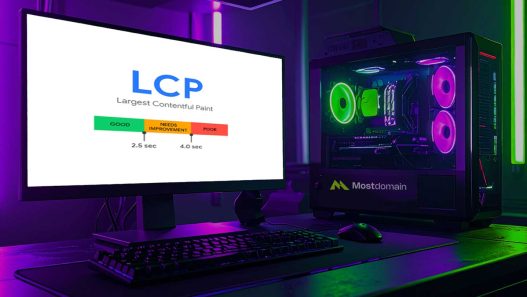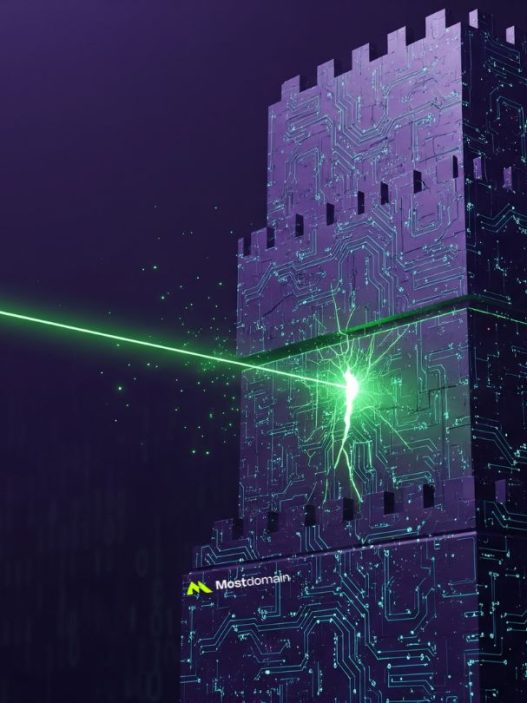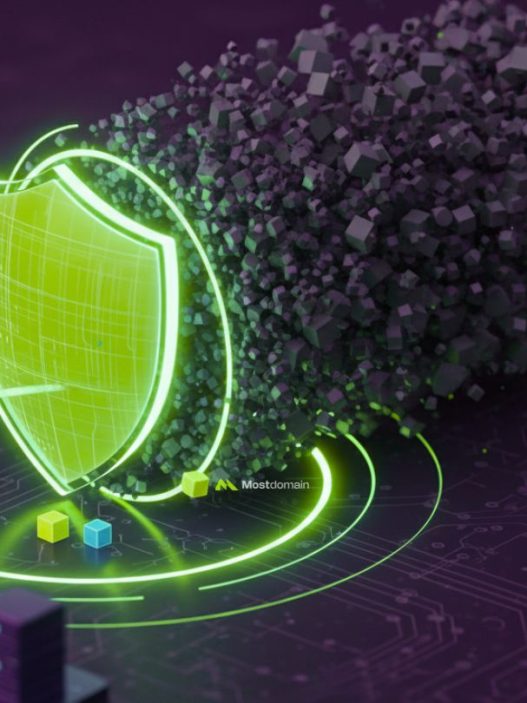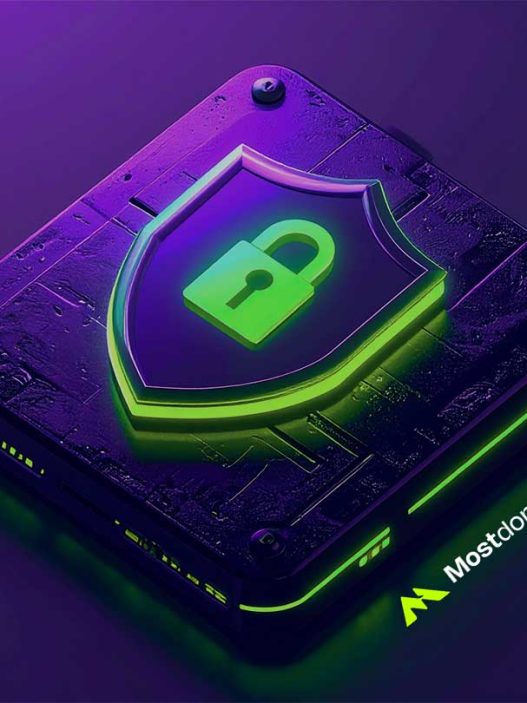Cloud security architecture implementation has become a critical business imperative as 99% of cloud security failures will be the customer’s fault by 2025, according to Gartner’s latest predictions. With cybercriminals increasingly targeting cloud environments and 67% of B2B cybersecurity purchases beginning with a Google search, the urgency for robust security frameworks has never been more critical.
This comprehensive guide will equip enterprise decision-makers, security architects, and IT leaders with the strategic insights and practical frameworks needed to build resilient cloud security architectures. From Zero Trust principles to AI-driven threat detection, we’ll explore the cutting-edge approaches that industry leaders are using to stay ahead of evolving cyber threats.
Why Traditional Security Models Are Failing in the Cloud Era?
As organizations accelerate their digital transformation journeys, the attack surface continues to expand exponentially. The traditional perimeter-based security model has become obsolete in an era where over 80% of enterprises are expected to adopt a cloud-first approach by 2025. This seismic shift demands a fundamental reimagining of how we approach cybersecurity.
The challenge is multifaceted: sophisticated threat actors are leveraging AI to scale their attacks, insider threats are becoming more prevalent, and the complexity of multi-cloud environments is creating blind spots that traditional security tools cannot address.
Learn About: Website Security Checklist For SEO Boost
What Makes Cloud Security Architecture Different from Legacy Approaches?
Organizations that fail to implement comprehensive cloud security frameworks are essentially operating in a digital minefield. Unlike traditional data centers with defined perimeters, cloud environments are dynamic, distributed, and constantly changing. This fundamental difference requires security architectures that can adapt, scale, and provide continuous protection across multiple cloud platforms and services.
The shared responsibility model further complicates matters, creating confusion about who is responsible for what aspects of security. Many organizations discover too late that their cloud provider’s security measures don’t extend to their specific applications, data, and configurations.
What Is Cloud Security Architecture and Why Does It Matter Now More Than Ever?

Cloud security architecture represents the strategic blueprint that defines how security controls, policies, and technologies work together to protect cloud-based assets. Unlike traditional on-premises security models, cloud security architecture implementation must account for shared responsibility models, dynamic scalability, and the distributed nature of modern cloud environments.
The fundamental difference lies in the approach: where traditional web security focused on building walls around a defined perimeter, cloud security architecture requires a more sophisticated strategy that assumes breach and focuses on containing, detecting, and responding to threats in real-time.
The Foundation: Understanding Shared Responsibility
| Responsibility Layer | Cloud Provider | Customer |
| Physical Security | ✅ Data centers, hardware | ❌ N/A |
| Infrastructure | ✅ Network, hypervisor | ❌ N/A |
| Platform Security | ✅ OS patches, basic config | ✅ Advanced configuration |
| Application Security | ❌ N/A | ✅ Code, vulnerabilities |
| Data Protection | ❌ N/A | ✅ Encryption, access control |
| Identity Management | ✅ Service authentication | ✅ User access, permissions |
Critical Insight: “The cloud provider secures the cloud infrastructure, but customers must secure everything they put in the cloud. This distinction is where most organizations struggle and where breaches typically occur.” – Cloud Security Alliance
How Are 2025’s Security Trends Reshaping Enterprise Protection?
The cloud security landscape is experiencing unprecedented transformation, driven by emerging technologies and evolving threat vectors. Organizations that understand and adapt to these trends will gain significant competitive advantages in both security posture and operational efficiency.
Zero Trust: From Buzzword to Business Imperative
Zero Trust Architecture has evolved beyond a security concept to become a fundamental business requirement. This approach operates on “never trust, always verify,” fundamentally changing how organizations approach access control and network security.
| Zero Trust Component | Traditional Approach | Zero Trust Approach |
| User Verification | One-time login | Continuous authentication |
| Network Access | VPN-based perimeter | Identity-based access |
| Device Trust | Domain-joined devices | Device health verification |
| Data Protection | Perimeter-based | Data-centric security |
Implementation Results:
- ✅ 75% reduction in security incidents (Deutsche Bank study)
- ✅ 60% faster threat detection and response
- ✅ 40% reduction in operational security costs
- ✅ 99.9% uptime for critical business systems
Can AI Really Replace Human Security Analysts?
Artificial Intelligence is revolutionizing cloud security by enabling proactive threat detection and automated response capabilities. AI-driven security solutions can analyze vast datasets quickly, identifying patterns and anomalies that human analysts might miss.
AI Security Applications in Practice:
| AI Technology | Use Case | Effectiveness Rate |
| Behavioral Analytics | Insider threat detection | 94% accuracy |
| Pattern Recognition | Malware identification | 99.7% detection rate |
| Predictive Analytics | Breach prevention | 85% threat prediction |
| Natural Language Processing | Threat intelligence | 78% false positive reduction |
Industry Reality Check: “63% of security professionals believe AI enhances security capabilities, with threat detection and response highlighted as the primary focus area. Over 55% of organizations implemented generative AI solutions for cloud security in 2024.” – Cloud Security Alliance Survey
Read More: Expert-Tested WordPress Security Plugins
What Are the Essential Steps for Bulletproof Implementation?
Successful cloud security architecture implementation requires a systematic approach that balances security requirements with business objectives. The following framework has been proven effective across various industries and organizational sizes.
Phase 1: Assessment and Discovery (Weeks 1-4)
The foundation begins with comprehensive discovery and risk assessment. This phase involves understanding your current security posture, identifying critical assets, and mapping potential threat vectors.
Week-by-Week Breakdown:
- Week 1: Asset inventory and data classification
- Week 2: Threat modeling and risk assessment
- Week 3: Compliance gap analysis
- Week 4: Stakeholder alignment and budget approval
Phase 2: Foundation Design (Weeks 5-8)
Architecture Design Framework:
| Design Principle | Implementation Focus | Success Metric |
| Defense in Depth | Multiple security layers | 90% threat containment |
| Least Privilege | Minimal access rights | 50% reduction in over-privileged accounts |
| Continuous Monitoring | Real-time visibility | <5 minutes mean detection time |
| Incident Response | Automated workflows | <15 minutes mean response time |
With a clear understanding of your current state and requirements, this phase focuses on designing the target architecture and creating detailed implementation plans that align with business objectives.
Phase 3: Identity and Access Management Foundation (Weeks 9-12)
IAM serves as the cornerstone of cloud security architecture. This phase establishes the identity infrastructure that will govern access to all cloud resources throughout your environment.
Critical Implementation Checklist:
- ✅ Multi-Factor Authentication (MFA) for all accounts
- ✅ Role-Based Access Control (RBAC) with job function alignment
- ✅ Privileged Access Management (PAM) for high-risk accounts
- ✅ Single Sign-On (SSO) integration with existing systems
Phase 4: Data Protection Strategy (Weeks 13-16)
Data protection forms the heart of cloud security architecture. This phase implements comprehensive encryption strategies and data loss prevention controls to safeguard sensitive information.
Encryption Implementation Priorities:
| Data State | Encryption Method | Key Management | Compliance Impact |
| Data at Rest | AES-256 encryption | Customer-managed keys | GDPR, HIPAA compliance |
| Data in Transit | TLS 1.3 minimum | Automated certificate management | SOX, PCI DSS compliance |
| Data in Use | Homomorphic encryption | Hardware security modules | Financial regulations |
Security Reality: “Encryption is not just about compliance—it’s your last line of defense. Even if attackers gain access to your data, proper encryption renders it useless without the corresponding keys.”
Phase 5: Network Security and Segmentation (Weeks 17-20)
Network security controls provide the foundation for secure communication and traffic management within your cloud environment. This phase implements micro-segmentation strategies that limit attack propagation.
Network Security Implementation:
- Virtual Private Clouds (VPCs) for workload isolation
- Security groups with least-privilege rules
- Web Application Firewalls (WAF) for application protection
- Network Access Control Lists (NACLs) for subnet-level filtering
Phase 6: Monitoring and Response (Weeks 21-24)
Continuous monitoring and rapid incident response capabilities are essential for maintaining security in dynamic cloud environments. This phase establishes the security operations foundation.
Monitoring Stack Components:
| Tool Category | Primary Function | Integration Level | ROI Impact |
| SIEM | Log correlation and analysis | High | 40% faster incident detection |
| UEBA | Behavioral anomaly detection | Medium | 60% reduction in false positives |
| CSPM | Configuration compliance | High | 80% misconfiguration prevention |
| SOAR | Automated response workflows | Medium | 70% faster incident response |
Learn About: Emergency WordPress Malware Cleanup
How Do Industry Leaders Master Implementation Without Breaking the Bank?
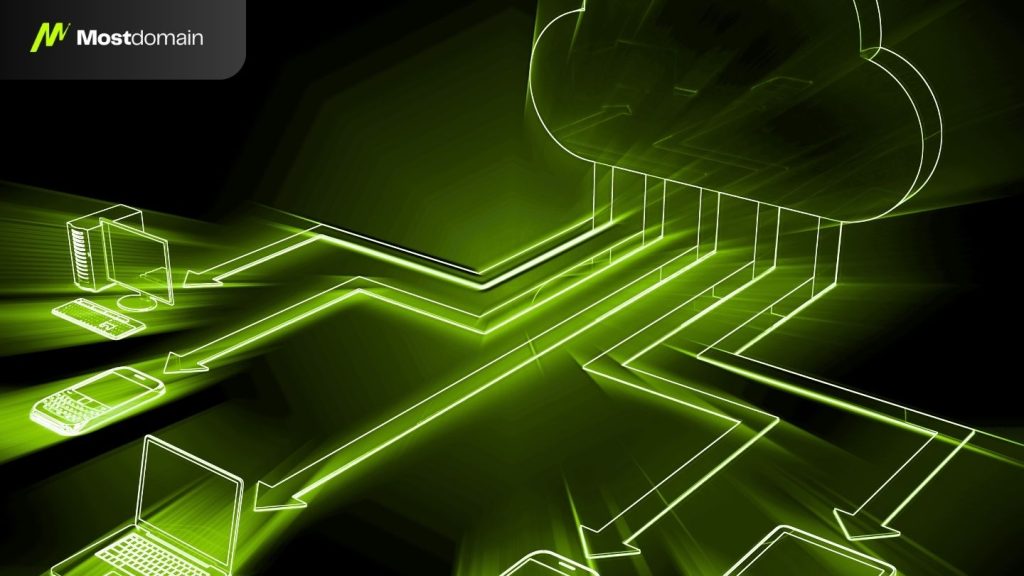
Learning from organizations that have successfully implemented cloud security architecture can help avoid costly mistakes and accelerate your implementation timeline while maximizing return on investment.
Financial Services: Regulatory Excellence at Scale
A leading global bank implemented comprehensive cloud security architecture that achieved 75% reduction in security incidents while maintaining compliance with SOX, PCI DSS, and Basel III regulations.
Success Strategy Breakdown:
- Automation-First: 60% reduction in manual compliance tasks
- DevSecOps Integration: Security embedded in CI/CD pipelines
- Continuous Training: Quarterly security training for 5,000+ developers
- Vendor Partnerships: Strategic alliances with specialized security providers
Healthcare: Patient Data Protection in Practice
A major healthcare network successfully migrated critical patient systems to the cloud while maintaining HIPAA compliance and improving overall security posture by 40%.
Implementation Highlights:
- Zero Trust Architecture: Every access request verified regardless of location
- Data Classification: Automated patient data protection with real-time monitoring
- 24/7 SOC: Healthcare-specific threat intelligence and incident response
Which Tools Deliver Maximum Security ROI in 2025?
Selecting the right tools and vendors is crucial for successful cloud security architecture implementation. The following evaluation framework helps organizations make informed decisions based on specific requirements and budget constraints.
Leading Platform Comparison Matrix
| Platform | Multi-Cloud Support | AI Capabilities | Compliance Features | Cost Efficiency |
| Microsoft Defender for Cloud | Good | Excellent | Excellent | Very Good |
| AWS Security Hub | Fair | Excellent | Very Good | Excellent |
| Google Cloud Security Command Center | Fair | Outstanding | Good | Good |
| Palo Alto Prisma Cloud | Outstanding | Excellent | Very Good | Fair |
| Check Point CloudGuard | Very Good | Good | Excellent | Good |
Total Cost of Ownership Considerations:
- Licensing costs: 30-40% of total spend
- Implementation services: 20-25% of total spend
- Training and certification: 10-15% of total spend
- Ongoing operations: 20-25% of total spend
Vendor Selection Reality: “The best tool is not the one with the most features—it’s the one your team can effectively implement, maintain, and scale with your business growth.”
Discover: WordPress Security Crisis Solutions
How Do You Future-Proof Against Tomorrow’s Threats?
The cybersecurity landscape continues to evolve rapidly, with new threats and technologies emerging regularly. Future-proofing your cloud security architecture requires building adaptability into your design while staying informed about emerging trends.
Preparing for the Quantum Computing Revolution
Quantum Computing Impact Timeline:
- 2025-2027: Quantum-safe algorithm standardization
- 2028-2030: Early quantum computer deployment
- 2030+: Widespread quantum computing adoption
Quantum-Safe Preparation Checklist:
- ✅ Inventory current encryption implementations
- ✅ Plan migration to post-quantum cryptography
- ✅ Partner with vendors offering quantum-safe solutions
- ✅ Develop quantum readiness roadmap
Edge Computing Security Challenges
As processing moves closer to data sources, traditional cloud security models must adapt to secure distributed computing environments with limited connectivity and processing power.
Edge Security Requirements:
- Lightweight security agents for resource-constrained devices
- Offline-capable threat detection and response
- Secure device provisioning and management
- Edge-to-cloud secure communication protocols
Your Strategic Roadmap to Cyber Resilience
The journey toward robust cloud security architecture implementation requires commitment, resources, and strategic thinking. Organizations that approach this systematically while learning from industry best practices will build resilient security postures that enable rather than constrain business growth.
Immediate 30-Day Action Plan:
- Week 1: Conduct comprehensive security assessment
- Week 2: Define security requirements and success metrics
- Week 3: Secure executive sponsorship and budget approval
- Week 4: Begin IAM foundation implementation
90-Day Success Metrics:
- 50% reduction in security incidents
- 90% improvement in compliance audit scores
- 40% faster incident detection and response
- 25% reduction in overall security operational costs
Key Performance Indicators to Track:
| Metric Category | Current Baseline | 6-Month Target | 12-Month Goal |
| Incident Response | Average detection time | <30 minutes | <5 minutes |
| Compliance | Audit findings | 90% reduction | 95% reduction |
| Cost Efficiency | Security spend per user | 20% reduction | 35% reduction |
| Business Enablement | Time to deploy secure workloads | 50% faster | 70% faster |
Final Thought: “The organizations that will thrive in the coming years are those that view cloud security not as a cost center, but as a strategic enabler of digital transformation. By implementing comprehensive cloud security architecture, you’re not just protecting against current threats—you’re building the foundation for future innovation and growth.”
Remember: The cost of prevention is always lower than the cost of remediation. Invest in comprehensive cloud security architecture today to avoid becoming tomorrow’s breach headline.
References
- Gartner. (2024). “Forecast: Public Cloud Services, Worldwide, 2022-2028.” Gartner Research.
- Cloud Security Alliance. (2025). “Top Threats to Cloud Computing: The Egregious Eleven.” CSA Research Report.
- Check Point Software. (2025). “Cloud Security Report 2025: State of Cloud Native Security.” Check Point Research.
- IBM Security. (2024). “Cost of a Data Breach Report 2024.” IBM Security Intelligence.
- Microsoft. (2025). “Microsoft Digital Defense Report 2025.” Microsoft Security Intelligence.
- Ponemon Institute. (2024). “The State of Cloud Security 2024.” Ponemon Institute Research.
- SANS Institute. (2024). “2024 Cloud Security Survey.” SANS Institute.
- Verizon. (2024). “2024 Data Breach Investigations Report.” Verizon Enterprise Security.
- NIST. (2024). “NIST Cybersecurity Framework 2.0.” National Institute of Standards and Technology.
- ENISA. (2024). “Cloud Security Guidance.” European Union Agency for Cybersecurity.




